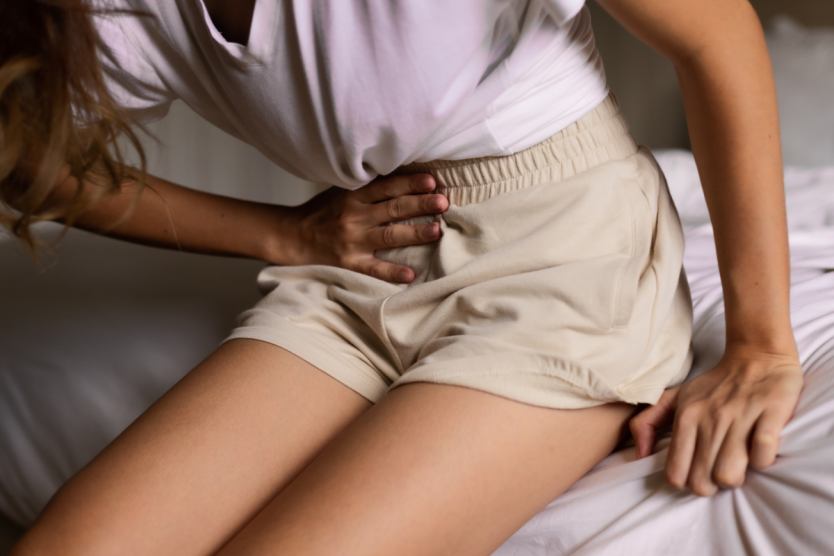Women with endometriosis often suffer severe pelvic pain in addition to other symptoms.
Living with the discomfort and pain can impact your daily life. Here’s how to help endometriosis pain.
Why Do I Have Endometriosis?
If you have pelvic pain, particularly associated with your periods, you might have endometriosis. If so, you’re not alone.
Endometriosis affects an estimated 2 to 10 percent of women between the ages of 25 and 40 in the United States,1 and roughly 10 percent—or 190 million—of reproductive aged women and girls globally.2
This chronic condition is associated with severe, life-impacting pain during periods, sexual intercourse, bowel movements and/or urination.2 Although many women experience cramping during their periods, if you have endometriosis, you may experience menstrual pain that’s far worse than usual, and that pain may increase over time.3
You may also occasionally have heavy menstrual periods or bleeding between periods, and diarrhea or constipation during periods.3 Endometriosis can also cause chronic pelvic pain, abdominal bloating, nausea, fatigue, and sometimes depression, anxiety, and infertility.2
What Causes Endometriosis?
Endometriosis happens when tissue similar to that which lines the inside of your uterus grows outside your uterus. It typically impacts your ovaries, fallopian tubes and the tissue lining your pelvis.3
This tissue acts as endometrial tissue would, by thickening, breaking down and bleeding with each menstrual cycle. But that tissue has no way to exit your body, so it becomes trapped, and the surrounding tissue can become irritated, eventually developing scar tissue and adhesions or bands of fibrous tissue that can cause pelvic tissues and organs to stick to each other.3
That in turn can cause pain that is sometimes severe, particularly during your periods. But effective treatments are available.
How To Help Endometriosis Pain
There is no cure for endometriosis, but there are plenty of treatments available to manage the pain and give you relief. Here are the different forms of treatment that may be recommended by your doctor to help relieve pain and other symptoms:
Painkillers: One form of painkiller is a nonsteroidal anti-inflammatory medication (NSAID), like ibuprofen (brand names include Advil, Motrin) and naproxen (Aleve).4 Another option is what’s known as a simple analgesic, such as acetaminophen or paracetamol (Tylenol) to treat mild pain.5
At-home pain remedies: You may try something as simple as a hot water bottle, heated wheat bag, or hot bath to reduce pain. A TENS machine, which has electrodes that attach to the skin and send electrical pulses into the body, may also help with pain.5
Pelvic floor physical therapy: This can help release tension in tight muscles of the pelvic floor, which can cause muscle irritation and muscular pain. A specially trained physical therapist will help relax the contracted and shortened muscles, helping to alleviate pain in the pelvic floor. Acupuncture is another option, a treatment that uses small needles applied at specific sites on the body to relieve chronic pain.4
Lifestyle changes: Exercising on a regular basis, eating a balanced diet and getting proper sleep may help you cope with the pain and stress.4
Hormone therapies: The menstrual cycle that drives endometriosis is caused by hormones, so adjusting those levels can sometimes reduce pain. There are different ways to administer hormone medication, from pills to injections and other forms. By modifying or halting the monthly egg-releasing cycle, the hope is that you will find relief from pain and other symptoms linked with endometriosis.4
Surgery: There are different types of surgery, depending whether you would like to become pregnant. One option is surgery to remove the endometriosis implants while preserving your uterus and ovaries. Another option is hysterectomy surgery to remove the uterus and ovaries. However, many endometriosis experts are moving away from this approach, instead focusing on the careful and thorough removal of all endometriosis tissue.6
Ask Your Doctor
If you’re suffering with endometriosis pain, ask your doctor for advice on managing it. One of these treatments may be suitable for you. Use our Physician Finder to find a doctor near you with expertise in women’s health. Don’t suffer in silence.




















